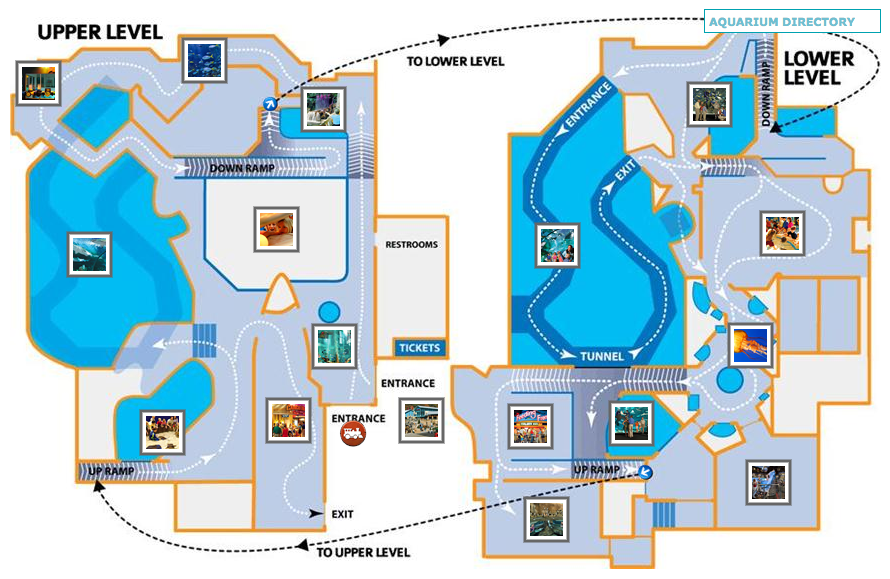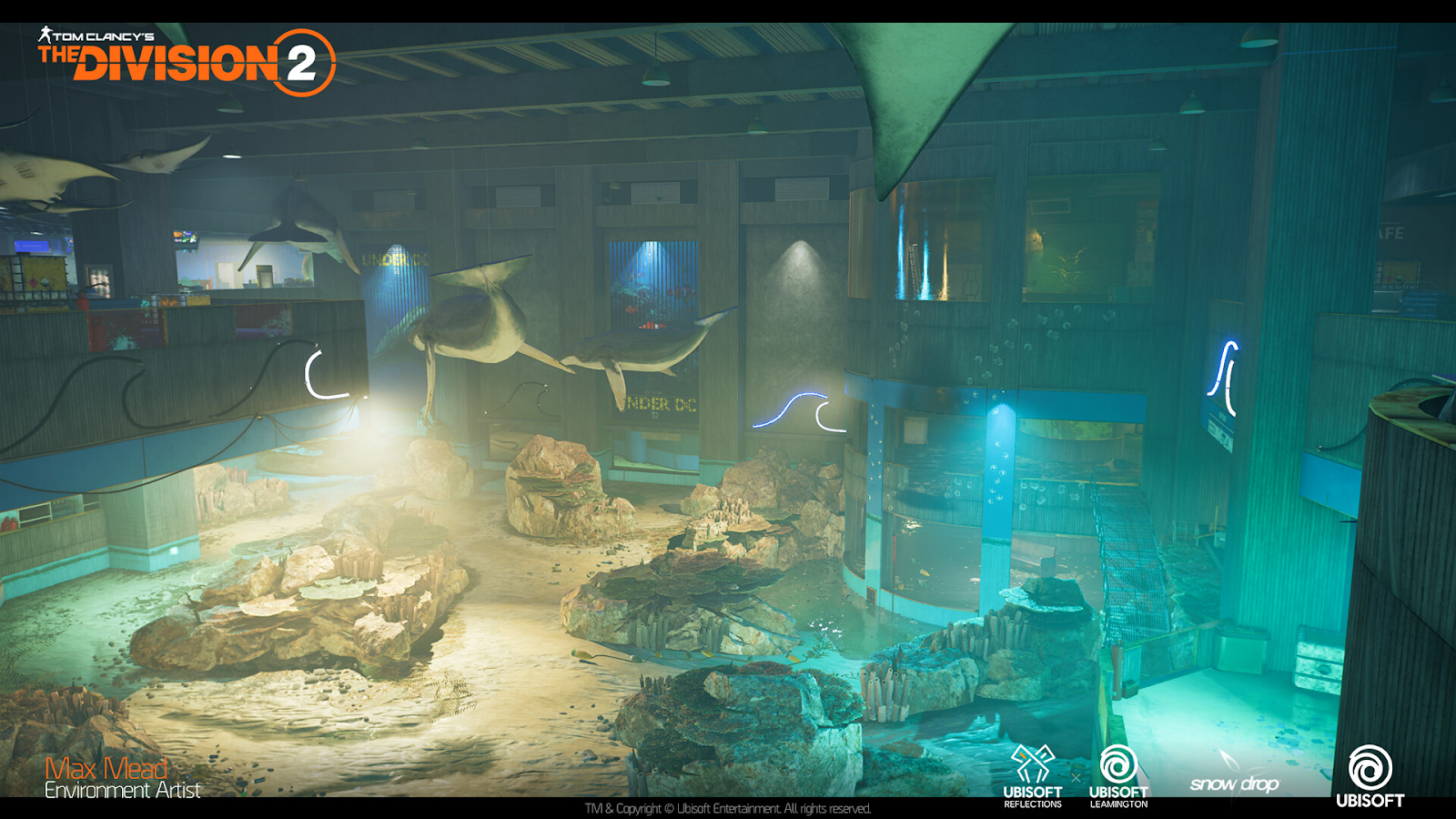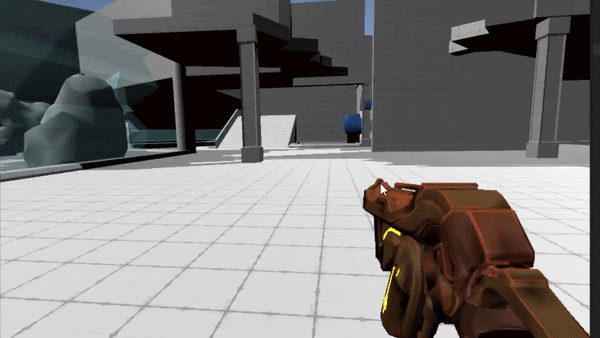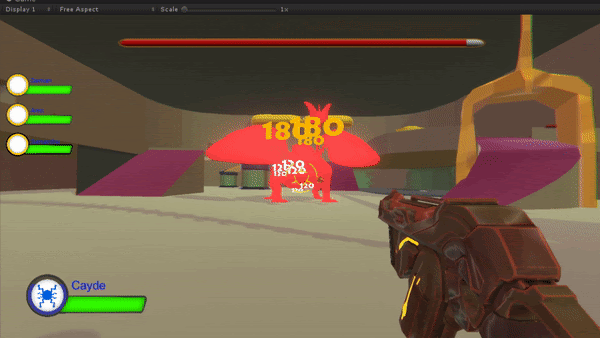
Game Producer, Level Designer
- Platforms: Console
- Engine: Unity
- Team Size: 6
Identifying the Opportunity in Gameplay Mechanics
What can the player do?
- Run, jump, double jump, revive
- Tesla Role: Fire 3-projectile buckshot, pick up boulders and launch them
- Edison Role: Automatic single projectile, place down fire wall that amplifies projectiles shot through it
What can the NPC’s do?
- Acid vomit: Area of effect ability that damages all players that step in it
- Blob attack: Targets players that are alone and furthest from the boss and fires a volley of vomit projectiles towards them
- Shell spin: Boss becomes invulnerable, spins around and bounces off walls, causing debris to fall from the ceiling
Creating the Space for those Mechanics
Basic Principle Behind the Level
When creating the initial map for our boss battle, we examined some trends in the industry with other boss battles to find something unique that had rarely been done before. A common trope was that players would “circle” the boss; every boss map was some form of arena where the player could run literal circles around the boss while shooting at it.
We wanted to design (no pun intended) around that issue. Using a “hide and seek” approach with the boss behaviour, our map was designed more like a maze than an arena, allowing the full use of the player double jump and allowing the boss to not just beeline towards the player but seem more like a living animal trying to survive.

Verticality prevents circling 
Open space for 4 players
Inspiration and Justification
Using Toronto’s Ripley’s Aquarium as an example (and admittedly an excuse to visit and take pictures) the team found it the perfect blend of design elements that fit the direction of our project. Open spaces on the ground allowed for exhibits (or an AI boss) to move around and patrons (or players) to interact and explore. The overhead walkways and staircases as well as the underground tunnels gave a tailored movement path for people.
As a more comparative example to other video games, we took a look at The Division 2. Again, an open bottom floor with some some raised platforms here and there for variety, as well as some over-looking balconies/elevated floor levels. A notable takeaway from this map, however, was the use of the hanging whales from the ceiling. We thought it would be a cool game opportunity if the players could use the double jump on these models to get from elevation to elevation without ever touching the ground.

Floorplan of Ripley’s Aquarium 
The Division 2 Aquarium Map
Iterations in Development
Initial Playtest Findings
The first round of testing proved that the original design served more benefits to the players than it did the boss. While jumping around atop pillars and geometry was fun, engaging the boss felt more like a one-sided battle rather than a back and forth struggle. The boss was not effective in such tight quarters, and with little vertical engage the boss was running more often than fighting.
We opted for a map that was smaller overall, but still had vertical sections that the players could use the double jump feature on. This more intimate level re-contextualized the behaviour of the boss. Now, rather than seem like it was running from the players, it felt more like a rat trapped in a corner; rabid and lashing out at the players.

Aquarium floor 
Small, lower level areas 
Testing the boss in the new space
Correcting an Overcorrection
We tested this iteration of the map and found that we had overcorrected. While the initial design had the boss too passive, this new map made the boss too aggressive. The boss moved too quickly for players to track and shoot in such a small space, which also meant players were constantly next to each other and making it difficult to strafe or get to higher ground. The boss to could damage multiple players with a single attack.
We tweaked and tested a new map that was in between the two extremes; drawing the movement freedom from the first map we designed, and the chaos in movement (bouncing off geometry as shown above) into a third map.

Lower height advantage meant equal ground to fight on 
Freedom of movement for both boss and players
Takeaways on the Last Iteration
While unfinished due to the onset of the pandemic, the project emphasized the importance of rapid iterative testing during development. A lot of concepts the team thought would help facilitate the mechanics were oftentimes overdone. A balancing act between evolving levels, mechanics, and testing could not be done in a vacuum; each section of development had to evolve alongside each other. Level design could only evolve if the other mechanics were not invalidated. The changes to the game were in service to player needs, not what one designer “thought” would be more fun.